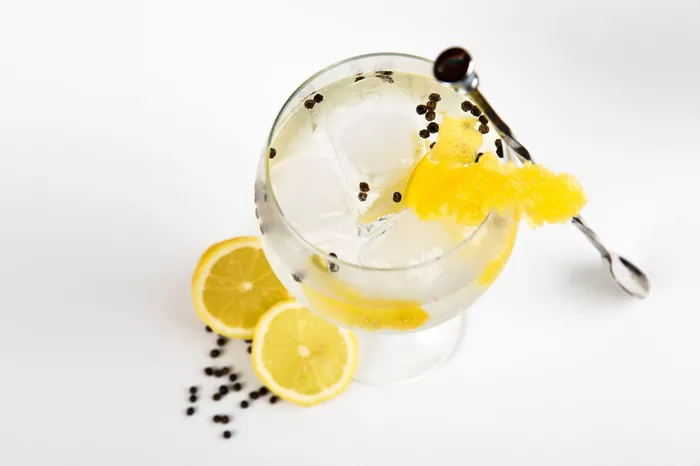In the world of mixology, the Sidecar cocktail stands as a timeless classic, renowned for its balanced blend of flavors and its elegant presentation. As cocktail enthusiasts continue to explore the intricacies of this beloved libation, an essential consideration emerges: How many calories in a Sidecar cocktail? Understanding the nutritional profile of this cocktail not only aids in mindful consumption but also allows individuals to make informed choices about their dietary preferences and health goals.
Caloric Composition of a Sidecar Cocktail
The quest to uncover the caloric content of a Sidecar cocktail delves into the components that constitute this iconic drink. Traditionally crafted with brandy, orange liqueur, and lemon juice, the Sidecar embodies a harmonious fusion of sweet, citrusy, and boozy elements. Each ingredient contributes to the overall flavor profile and, consequently, the caloric composition of the cocktail.
Starting with the primary spirit, brandy, it’s crucial to assess its caloric contribution. On average, a standard serving of brandy contains approximately 65 calories per ounce. Considering that the Sidecar typically incorporates 2 ounces of brandy, this component alone contributes approximately 130 calories to the cocktail’s overall tally. However, variations in brandy type and proof can slightly alter this figure.
Moving on to the orange liqueur component, the caloric content varies depending on the specific type used in the recipe. Popular choices include Cointreau, Grand Marnier, or Triple Sec, each offering distinct flavor profiles and nutritional profiles. On average, orange liqueurs contain around 95 calories per ounce. Given that a Sidecar typically includes 1 ounce of orange liqueur, its caloric contribution stands at approximately 95 calories.
Lastly, lemon juice, a quintessential element in the Sidecar, contributes minimal calories compared to the other ingredients. With approximately 4 calories per ounce, the lemon juice component in a Sidecar, typically comprising 0.75 ounces, adds a mere 3 calories to the overall count.
See Also: what alcohol goes with indian food
Total Caloric Content and Variations
Combining the caloric contributions of brandy, orange liqueur, and lemon juice yields the total caloric content of a classic Sidecar cocktail. With 130 calories from brandy, 95 calories from orange liqueur, and 3 calories from lemon juice, the grand total amounts to 228 calories per serving. However, it’s essential to acknowledge that variations in recipe proportions and ingredient choices can influence the final caloric count.
For instance, individuals may opt for a lighter version of the Sidecar by reducing the amount of orange liqueur or substituting it with a lower-calorie alternative. Additionally, adjusting the sweetness level by incorporating sugar-free syrups or fresh fruit juices can further reduce the overall caloric content without compromising flavor.
Conversely, indulgent twists on the classic Sidecar, such as incorporating flavored syrups, additional sweeteners, or creamy liqueurs, can significantly elevate the caloric content of the cocktail. While these variations offer unique taste experiences, they often come with a higher caloric burden, necessitating mindfulness in consumption, especially for those mindful of their dietary intake.
Balancing Indulgence with Moderation
Understanding how many calories are in a Sidecar cocktail empowers individuals to make conscious decisions about their drinking habits and dietary goals. While enjoying an occasional Sidecar can certainly be a delightful indulgence, moderation remains key to maintaining a balanced lifestyle.
Incorporating the Sidecar into a well-rounded diet involves mindful consumption and thoughtful choices. Opting for lighter variations, moderating portion sizes, and balancing cocktail consumption with nutrient-dense foods can help individuals strike a harmonious balance between indulgence and nutrition.
Moreover, integrating physical activity into one’s routine can offset the caloric intake associated with enjoying cocktails like the Sidecar. Engaging in regular exercise not only supports overall health and well-being but also allows individuals to savor their favorite libations guilt-free.
Nutritional Considerations and Health Implications
While understanding the caloric content of a Sidecar cocktail is valuable, it’s essential to consider its broader nutritional implications. Beyond calories, cocktails contribute to overall nutrient intake, impacting factors such as sugar, carbohydrates, and alcohol content.
The sweetness of cocktails like the Sidecar often results from the inclusion of sugary liqueurs or syrups, which can significantly elevate sugar levels. Excessive sugar consumption not only contributes to empty calorie intake but also poses risks to metabolic health, including weight gain and increased risk of chronic diseases such as type 2 diabetes and cardiovascular issues.
Furthermore, the alcohol content in cocktails like the Sidecar carries its own set of considerations. Consuming alcohol in moderation is generally associated with a lower risk of adverse health outcomes, whereas excessive or binge drinking can lead to a myriad of health problems, including liver disease, impaired cognitive function, and addiction.
For individuals with specific dietary restrictions or health conditions, such as diabetes or alcohol intolerance, navigating the nutritional landscape of cocktails requires additional vigilance. Opting for lower-sugar alternatives, moderation in alcohol consumption, and consulting with healthcare professionals can help individuals make informed choices aligned with their health needs and preferences.
Conclusion
In the realm of cocktail culture, the Sidecar cocktail stands as a timeless classic, revered for its exquisite balance of flavors and sophisticated allure. However, unraveling the mystery of how many calories are in a Sidecar cocktail unveils essential insights into its nutritional profile and broader implications for dietary choices and health outcomes.
By deconstructing the caloric composition of the Sidecar and considering variations in recipe formulations, individuals can approach cocktail consumption with mindfulness and moderation. Balancing indulgence with nutrient-conscious choices and incorporating physical activity into one’s lifestyle fosters a holistic approach to well-being that encompasses both pleasure and health.
Ultimately, understanding the nutritional nuances of cocktails like the Sidecar empowers individuals to savor these libations responsibly, enhancing the enjoyment of social gatherings while prioritizing their long-term health and vitality.


